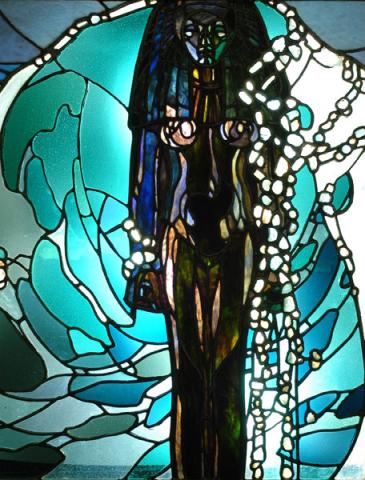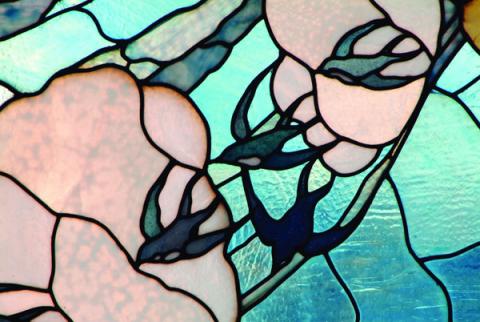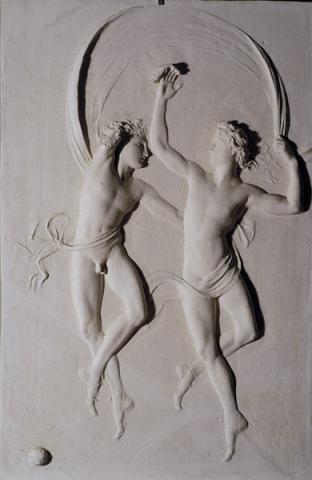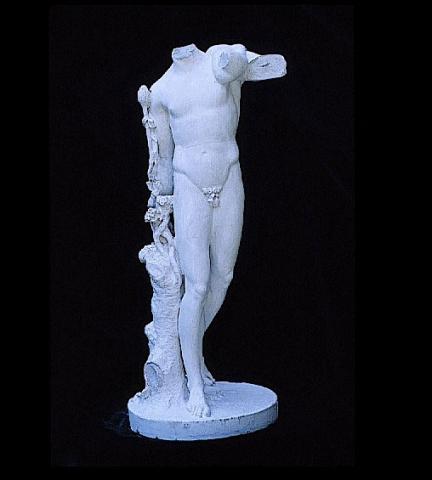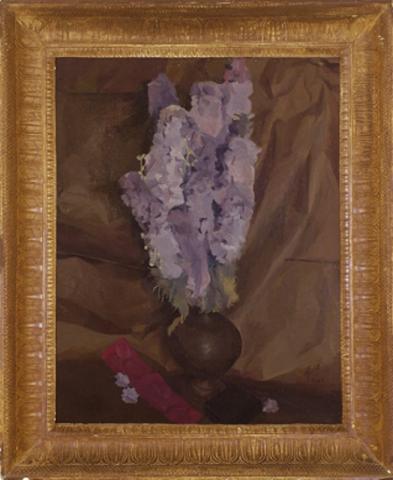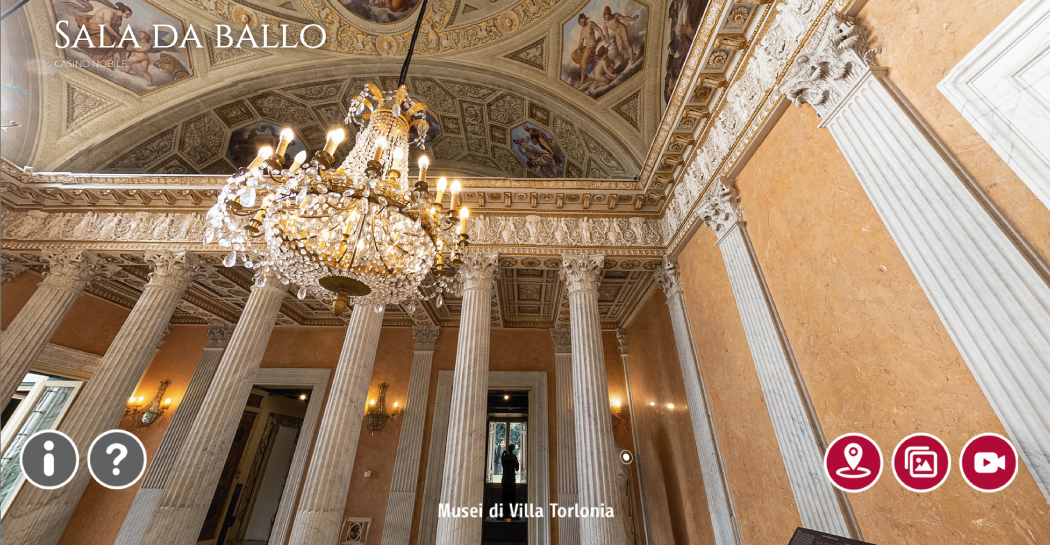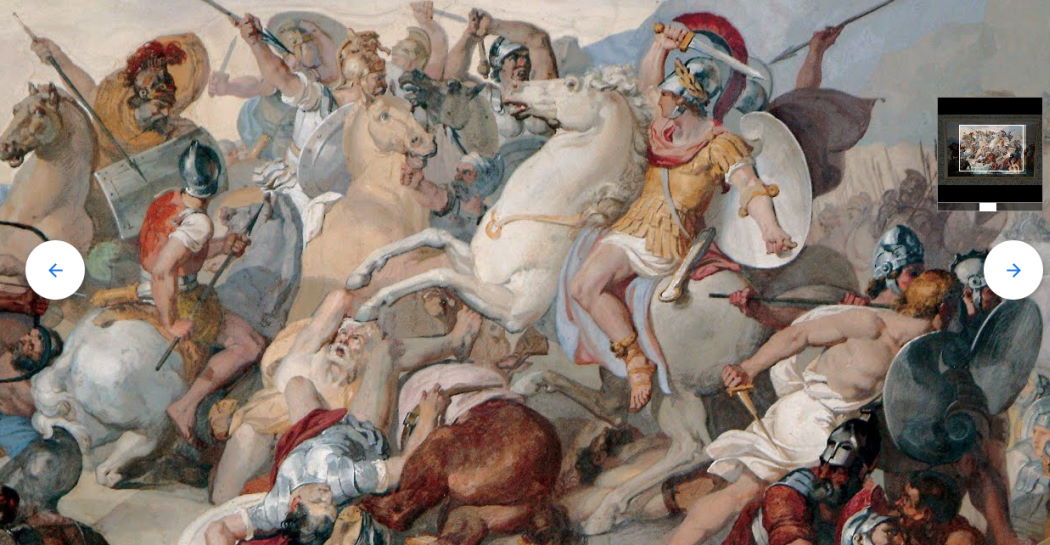The Artwork of the Month - May 2023
Roberto Melli
Vaso con giacinti (Fiori di campo), 1940
oil on canvas, 60x47 cm
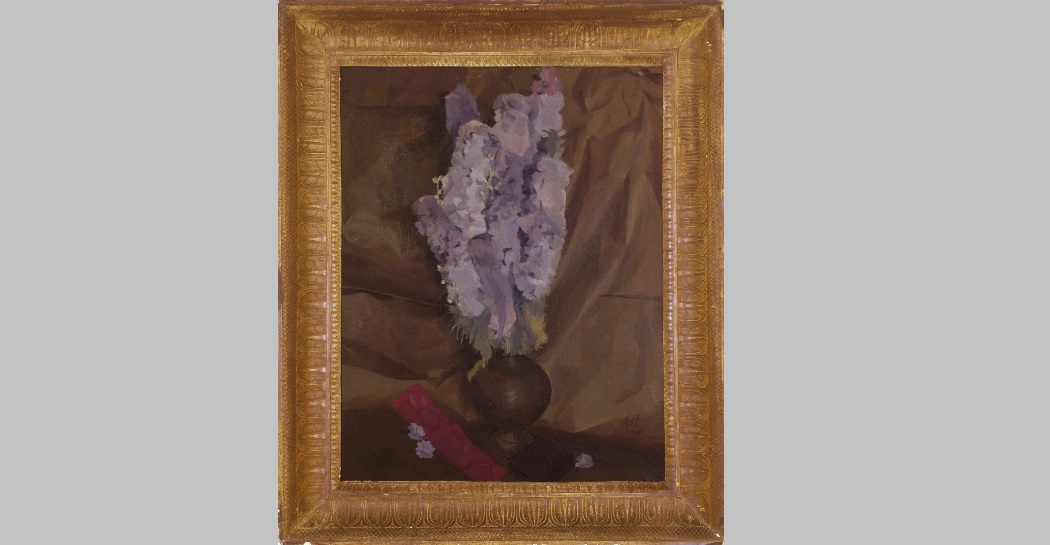
The painting depicts a still life with a vase of lilac flowers and a few other objects placed in front of a draped wall. The composition is essential: in addition to the brown, roundish vase, a dark box, a red rectangular silhouette and three corollas fallen from the bouquet of flowers appear. It is clear that the artist's intent is not descriptive; he does not wish to depict the beauty of the flowers or the exact shape of things; instead, he succeeds in restoring to the viewer's eye the overall harmony of an interior with warm, delicate and vibrant tones, in a timeless atmosphere.
The work is signed and dated '1940'. It is part of the production of the most difficult years of Melli's life, when he was forced to absent himself from public activities due to the racial laws of 1938 which, given the painter's Jewish origins, deprived him of civil rights and therefore of the possibility of participating in exhibitions, leading him to isolation and to suffer many financial difficulties until 1944. During these years, however, Melli continued to work, producing numerous works, including several still lifes, one of his favourite subjects. The work presented here was exhibited in 1947, under the title 'Lilac Flowers', at the Galleria del Secolo in Rome, in the first solo exhibition dedicated to Melli after his long period of isolation. Subsequently, it was again included among the works in the catalogue in the solo exhibition held in 1950 at the Galleria La Strozzina in Florence, where it was owned by Amerigo Terenzi, an important promoter of Roman artistic life, collector and editorial manager of the PC. Since 2006, the work has been in the Museo della Scuola Romana di Villa Torlonia - where it was given the title 'Vaso di giacinti' (Vase of Hyacinths) - thanks to a donation by Claudia Terenzi, Amerigo's daughter and a well-known art historian, one of the creators of the Museum itself.
With the title "Fiori di campo" (Field Flowers), the painting in question was also exhibited in the personal room dedicated to the artist at the 1954 Venice Biennale. In the same year, the critic Maurizio Calvesi, in an important monograph dedicated to Melli, wrote: "The magical sense, of light, almost exhilarated fantastic ignition, that can be read in these still lifes [...] is the version that Melli's personality could give us, which, almost as if redeeming his painful humanity, is all oriented towards a poignant penetration of the object through colour, as if investigating the secretly happy side of things. (Calvesi M., "Roberto Melli", Rome 1954, p. 47, repr. no. 52)
Roberto Melli (Ferrara, 1885 - Rome, 1958) was born into a family of Ferrara merchants of Jewish origin. An accountancy student destined to join the family business, he nevertheless became passionate about art as a teenager, starting to study painting privately. In 1902, he moved to Genoa where his sister lived and worked as an apprentice carver, at the same time frequenting the city's cultural environment. Here he met, amongst others, the sculptor Giovanni Prini and the wood carver Carlo Turina, who introduced him to the art of woodcuts. With this technique he collaborated in 1906 on the magazine Ebe, published in Chiavari. The young Melli also devoted himself to sculpture and painted the portrait of the actress Giulietta De Riso in these years. In 1910 he moved to Rome, where he shared a studio with Prini and where he consolidated his painting activity. In 1912, he married Anna Meotti, his fiancée from the Ferrara years. In the same year, he was invited to participate in the first Italian exhibition of woodcuts organised in Levanto by the magazine L'Eroica.
In 1913 and 1914, he took part in the first and second exhibitions of the Roman Secession with some of his sculptures. These were years in which he also approached the Futurist movement, towards which he maintained an autonomous attitude. After the call to arms in 1916, which saw him in Ferrara alongside Giorgio de Chirico, in 1917 Melli began a new activity in Rome, in the film industry, working for the San Marco Film production company, for which he made a number of films and looked after set designs. In the meantime, his painting activity continued and in 1918 he was part of the founding group of the magazine Valori Plastici, conceived by the painter Mario Broglio together with his wife Edita. It was a very influential publication that, published in 15 issues, theorised the recovery of the values of the Italic artistic tradition and the return to figurative culture, but not without a wide-ranging look towards European art and France in particular. Deepening his theoretical reflection on the value of painting, many years later, together with the artists of the Roman group Giuseppe Capogrossi and Emanuele Cavalli, Melli signed the Manifesto of Plastic Primordialism in October 1933, the concluding sentence of which reads: 'From colour one must draw everything but the result is not colour: it is a living fact'.
Melli's public and exhibition activity was interrupted in 1938 by the fascist racial laws that also took away his right to teach. Having overcome economic difficulties, he then freely resumed his work after the war in his three-room flat in Rome's Testaccio district, directly opposite the Mattatoio. Here, he started giving private painting lessons, and every week hosted young painter friends such as Renato Guttuso, Enrico Accatino and Fausto Pirandello. In 1945, he also began teaching painting at the Capital's Academy of Fine Arts. In 1954, the Venice Biennale dedicated a personal room to him. At the VII Quadriennale in Rome in 1955 he exhibited in the section Anthological exhibition of the masters 1910-30, where he was awarded the gold medal for sculpture. In 1955, Palazzo Madama in Turin dedicated a personal room to him within the exhibition Pittori d'oggi Francia-Italia. In 1957, the year in which two important anthological exhibitions were held at the Olivetti Centre in Ivrea and at the Ente Premi Roma, the volume Lunga favolosa notte (Long fabulous night) was published, which collected the poems he had composed since 1935, and the autobiographical article Breve storia del pittore M. (in Rinascita, nn. 7-8). Again in 1957, Melli was awarded a gold medal by the President of the Republic as a well-deserving person of school, culture and art.
Roberto Melli died in January 1958 and in the same year the National Gallery of Modern and Contemporary Art in Rome dedicated a retrospective to him, curated by Nello Ponente and Palma Bucarelli.
Back to the section > The Artwork of the Month of The Museo della Scuola Romana


























